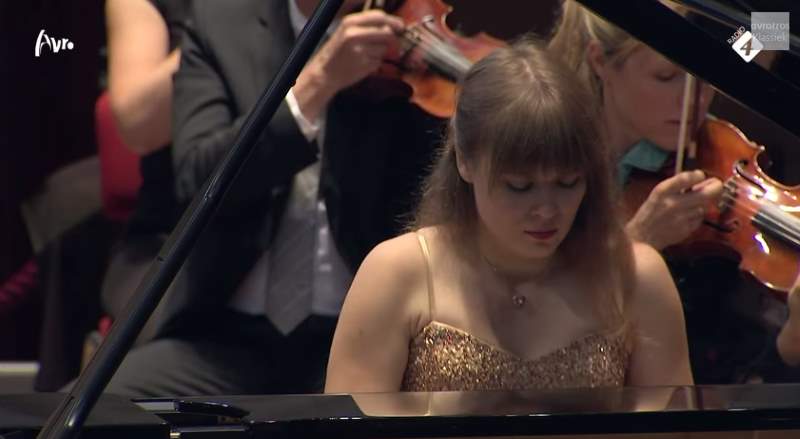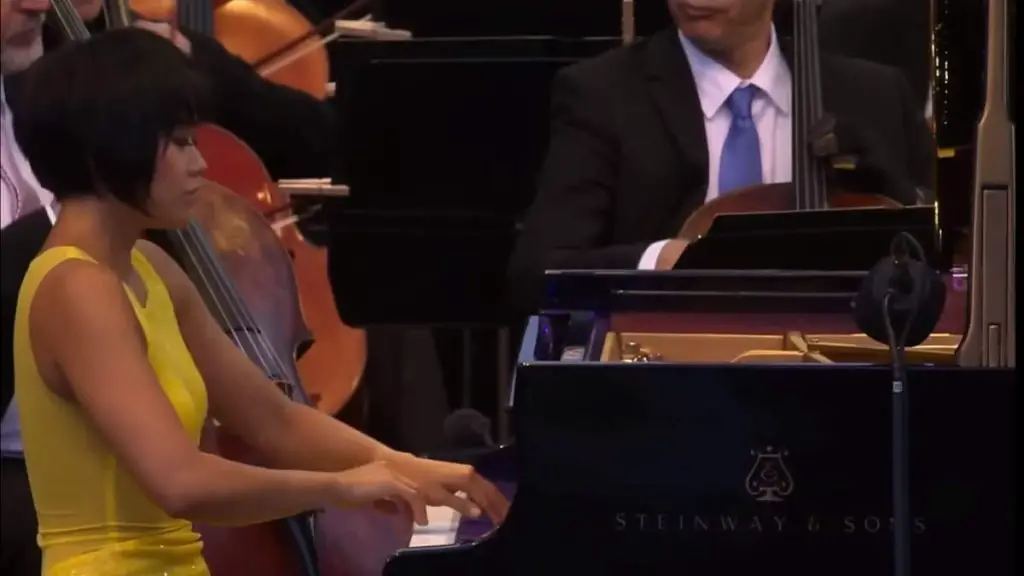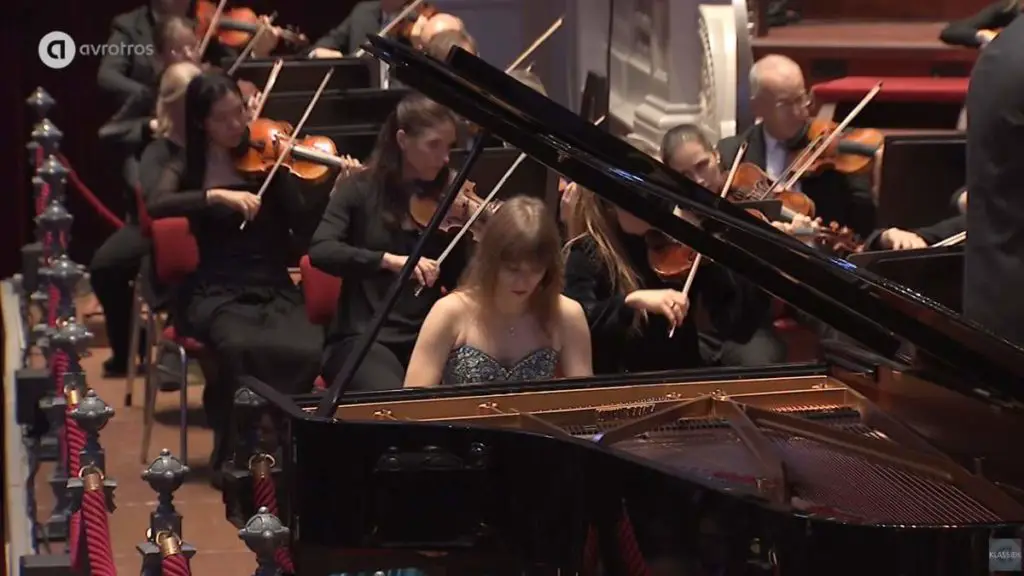Accompanied by the Philharmonie Südwestfalen, Ukrainian classical pianist Anna Fedorova performs Sergei Rachmaninoff’s Rhapsody on a Theme of Paganini, Op. 43, a concertante work that was written for piano and orchestra, closely resembling a piano concerto, all in a single movement. Conductor: Gerard Oskamp. Recorded on March 11, 2018, during The Sunday Morning Concert in Het Concertgebouw Amsterdam.
Rachmaninoff’s Rhapsody on a Theme of Paganini
The Rhapsody on a Theme of Paganini, Op. 43 is a concertante work written by Sergei Rachmaninoff for piano and orchestra, closely resembling a piano concerto, all in a single movement. Rachmaninoff wrote the work at his summer home, the Villa Senar in Switzerland, according to the score, from 3 July to 18 August 1934.
Rachmaninoff himself, a noted performer of his own works, played the piano part at the piece’s premiere on 7 November 1934, at the Lyric Opera House in Baltimore, Maryland, with the Philadelphia Orchestra conducted by Leopold Stokowski. Rachmaninoff, Stokowski, and the Philadelphia Orchestra made the first recording, on 24 December 1934, at RCA Victor’s Trinity Church Studio in Camden, New Jersey.
The English premiere on 7 March 1935 at Manchester Free Trade Hall also featured Rachmaninoff with The Hallé under the Ukrainian symphonic conductor Nikolai Malko (4 May 1883 – 23 June 1961).
The piece is a set of 24 variations on the twenty-fourth and last of the Italian violinist and composer Niccolò Paganini’s (27 October 1782 – 27 May 1840) Caprices for solo violin, which has inspired works by several composers.
Structure of the Rhapsody on a Theme of Paganini
Although Rachmaninoff’s work is performed in one stretch without breaks, the Rhapsody on a Theme of Paganini can be divided into three sections, as shown below. These correspond to the three movements of a concerto: up to variation 10 corresponds to the first movement, variations 11 to 18 are the equivalent of a slow movement, and the remaining variations make a finale.
ll variations are in A minor except where noted.
- Section 1:
- Introduction: Allegro vivace
- Variation 1: (Precedente)
- Theme: L’istesso tempo
- Variation 2: L’istesso tempo
- Variation 3: L’istesso tempo
- Variation 4: Più vivo
- Variation 5: Tempo precedente
- Variation 6: L’istesso tempo
- Variation 7: Meno mosso, a tempo moderato
- Variation 8: Tempo I
- Variation 9: L’istesso tempo
- Variation 10: L’istesso tempo
- Section 2:
- Variation 11: Moderato
- Variation 12: Tempo di minuetto (D minor)
- Variation 13: Allegro (D minor)
- Variation 14: L’istesso tempo (F major)
- Variation 15: Più vivo scherzando (F major)
- Variation 16: Allegretto (B♭ minor)
- Variation 17: (Allegretto) (B♭ minor)
- Variation 18: Andante cantabile (D♭ major)
- Section 3:
- Variation 19: A tempo vivace
- Variation 20: Un poco più vivo
- Variation 21: Un poco più vivo
- Variation 22: Marziale. Un poco più vivo (Alla breve)
- Variation 23: L’istesso tempo
- Variation 24: A tempo un poco meno mosso (A minor – A major)
Sources
- Rhapsody on a Theme of Paganini on Wikipedia


